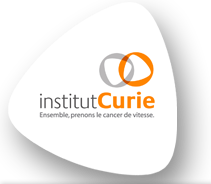Contralateral breast cancer risk in patients with breast cancer and a germline-BRCA1/2 pathogenic variant undergoing radiation
Résumé
Background: Radiation-induced secondary breast cancer (BC) may be a concern after radiation therapy (RT) for primary breast cancer (PBC), especially in young patients with germline (g)BRCA-associated BC who already have high contralateral BC (CBC) risk and potentially increased genetic susceptibility to radiation. We sought to investigate whether adjuvant RT for PBC increases the risk of CBC in patients with gBRCA1/2-associated BC.
Methods: The gBRCA1/2 pathogenic variant carriers diagnosed with PBC were selected from the prospective International BRCA1/2 Carrier Cohort Study. We used multivariable Cox proportional hazards models to investigate the association between RT (yes vs no) and CBC risk. We further stratified for BRCA status and age at PBC diagnosis (<40 and >40 years). Statistical significance tests were 2-sided.
Results: Of 3602 eligible patients, 2297 (64%) received adjuvant RT. Median follow-up was 9.6 years. The RT group had more patients with stage III PBC than the non-RT group (15% vs 3%, P < .001), received chemotherapy more often (81% vs 70%, P < .001), and received endocrine therapy more often (50% vs 35%, P < .001). The RT group had an increased CBC risk compared with the non-RT group (adjusted hazard ratio [HR] = 1.44; 95% confidence interval [CI] = 1.12 to 1.86). Statistical significance was observed in gBRCA2 (HR = 1.77; 95% CI = 1.13 to 2.77) but not in gBRCA1 pathogenic variant carriers (HR = 1.29; 95% CI = 0.93 to 1.77; P = .39 for interaction). In the combined gBRCA1/2 group, patients irradiated when they were younger than or older than 40 years of age at PBC diagnosis showed similar risks (HR = 1.38; 95% CI = 0.93 to 2.04 and HR = 1.56; 95% CI = 1.11 to 2.19, respectively).
Conclusions: RT regimens minimizing contralateral breast dose should be considered in gBRCA1/2 pathogenic variant carriers.
Domaines
Santé publique et épidémiologie
Origine : Publication financée par une institution
licence : CC BY - Paternité
licence : CC BY - Paternité
